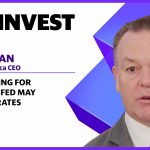President Joe Biden’s new plan to forgive student debt is likely to look much different than his first.
After the Supreme Court ultimately blocked Biden’s policy that would have cancelled up to $20,000 in student debt for tens of millions of people in June, the president immediately announced that he would attempt to deliver the relief another way.
His administration has already started that process, and established a “Student Loan Debt Relief Committee” — including Wisdom Cole at the NAACP, Kyra Taylor at the National Consumer Law Center and several student loan borrowers — to hash out the details.
Here’s what we know so far.
Reach of relief could drop to 10% of borrowers
Nearly 40 million Americans stood to benefit from Biden’s original student loan forgiveness plan.
More from Personal Finance:
60% of adults live paycheck to paycheck before the holidays
Shoppers embrace ‘girl math’ to justify luxury purchases
Paying in cash helps shoppers ‘forget’ guilty pleasures
The president’s Plan B for relief is likely to be much narrower in its reach, said higher education expert Mark Kantrowitz. That’s because the justices ruled that the president’s original plan, which would have covered more than 90% of federal student loan borrowers, was too far-reaching.
″’Can the Secretary use his powers to abolish $430 billion in student loans, completely canceling loan balances for 20 million borrowers, as a pandemic winds down to its end?'” wrote Chief Justice John Roberts in the majority opinion for Biden v. Nebraska. “We can’t believe the answer would be yes.”
Less than 10% of federal student loan borrowers are likely to qualify this round, Kantrowitz said.
Luke Herrine, an assistant professor of law at the University of Alabama, also believes the next forgiveness policy will include far fewer borrowers.
“I think it would be easier to justify in front of a court that is skeptical of broad authority,” Herrine said in an earlier interview with CNBC.
Five groups of borrowers may be eligible
The Biden administration seems focused on still delivering relief to five specific groups of borrowers, according to a recent paper issued by the U.S. Department of Education. Those are:
- Borrowers with current balances greater than what they originally borrowed.
- Those who entered into repayment on their student loans 25 or more years ago.
- Students who attended programs of questionable value.
- Borrowers eligible for existing relief programs, including Public Service Loan Forgiveness, who just haven’t applied.
- Debtors in financial hardship.
This forgiveness process is likely to take longer, experts say. Biden first tried to cancel student debt with an executive order in August 2022, and had promised borrowers the relief within six weeks of them completing their paperwork.
This time he’s turning to the rulemaking process. That procedure is lengthier, typically involving a public comment period and other time-consuming steps.
“Issuing new regulations can take as long as a year,” Kantrowitz said.
If the administration is successful this time, he said, borrowers could see their debt cancellation around the time of the 2024 presidential election.
Read the full article here




